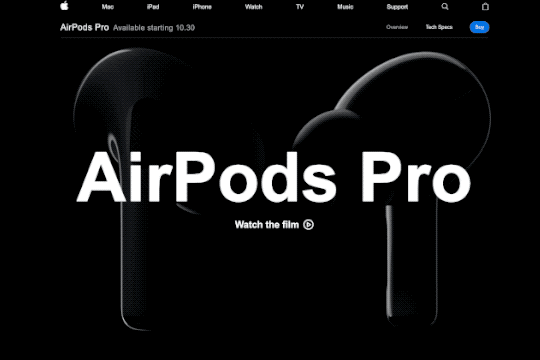Leading players in customer journey and UX

Customer journey and user experience (UX) are two unavoidable elements for internet merchants in 2021. One can no longer simply offer a product or service and hope that it works by itself: today merchants must do everything possible to guide potential customers towards it. To get inspired, we can take a look at the current leaders in user experience.

Source : Junto
Key elements of a successful digital journey
Before presenting some of the most influential players in UX, let’s take a look at the important elements to succeed in the customer journey what it takes to retain a customer until purchase.
What differentiates the industrial business from the UX business is the way the customer is approached. When Ford released the Ford T in the early 1900s, only one model and color was available to potential buyers. Confident by the lack of competition, the need to diversify its offering was irrelevant at the time.
Nowadays, mentalities have completely reversed. Consumers have become aware of the weight of their opinion and have gradually forced companies to adapt, starting from the point of deciding in a second if a consumer likes a merchant site and continuing their search if they don’t, perhaps finding other more relevant offers on other sites.
This new trend has led to increasingly personalized and short checkout forms and customer journeys to maximize the chances of capturing and retaining the customer before they abandon their journey. Merchants need to empathize and identify the frustrations of their prospects. Blanket and general marketing campaigns are becoming less relevant and less used online.
Several payment options for delivery:
Another important element in the online customer journey is the fateful moment when the customer will make the purchase. It is still objectively slower to make a purchase online than in store. Once a customer has chosen the product they want in-store, they only have to go to the checkout and use the payment method of their choice.
Online, the customer will have to go through the obligatory step of filling in a form: personal information, bank details, delivery methods, etc. These forms are sometimes dense and are a headache for online retailers, who do everything to make it as simple as possible. Beyond simplifying it, it is also important to be able to offer a maximum number of payment and delivery options. Payment methods are multiplying, and it would be a shame for an online merchant to lose a customer simply because he or she cannot find the payment option he prefers. This logic also applies to delivery options, which must cover different delivery needs.

Source : Blog Eudonet
Customer feedback:
Once the previous steps have been respected, e-merchants will have elements of analysis on their customers. They will have indicators showing whether the customer was satisfied (opinions, ratings…) and whether he is likely to order again. They will also be able to be proactive by sending post-purchase questionnaires, in order to get even more accurate feedback from their customers. In addition to receiving valuable information, companies will show their new customers that their opinion is taken into account.
Of course, there are other elements to an online customer journey. It’s a complex process, and one that is considered a priority when a company wants to offer its products and services online. Some players have successfully mastered this new and important exercise.
Notable players in UX and the customer journey
It’s hard not to mention Google, one of the leaders in UX over the years. Undisputed champion of search engines since its creation in 1998, the company has managed to convince people thanks to its ease of use. No need for training, computer background, advice… Google is a simple tool that anyone can use, even without being initiated to the customs of the Web.
For 20 years, Google has not needed to change much to stay relevant. Apart from the removal of some links below the search bar in the early versions of the engine, Google remains the same. A simple search bar, that’s all! Even if their technologies allow them to quickly capture a lot of information, historically, it is their ability to offer an extremely simple user experience that has made them strong.
Airbnb
Younger than Google, Airbnb is a company that has also fine-tuned its customer journey to meet the contemporary needs of users. We can already see that the principle of simplicity mentioned above for Google also applies to Airbnb. When the customer arrives on the website or mobile application, they are not overwhelmed with information. They find a search bar and a simplified menu containing only the most relevant elements for their search.
What originally set Airbnb apart from its competitors was a subtle yet essential element of UX: visibility and condensation of the most important information. So when a customer searches for a rental, they will have access to a map listing the location of the rental while seeing the price displayed on the map. Another proof that the customer journey should not be complex.
Once the destination has been chosen, AirBnb’s payment process is flexible. The option to pay in instalments is made available even before filling in personal information on a form. This online payment method is increasingly used by consumers who will be able to extend their spending over a longer period. The flexibility of the payment path continues when the customer is offered a number of payment options, including Visa, Amex, Mastercard and Paypal.
Spotify
The music platform Spotify has grown to the point where it is competing with the big, old music industry. As one of the pioneers of music streaming, Spotify even has exclusive deals with certain artists and personalities. In addition to winning over artists, Spotify has also retained its users with various customization features.
First, Spotify allows them to create, maintain and share personalised playlists. These playlists can be shared with others, and each one will be different and tailored to the individual’s musical tastes. Then, the platform’s Wrapped tool brings even more personalization by summarizing the preferences of its users yearly. Best artists, sounds, podcasts… Everything is analysed to offer the user ever more personalised results.
Spotify’s streaming business model makes content available in exchange for a monthly/annual subscription fee. In order to tempt potential users of their services, Spotify like many other streaming platforms offer free trials for a certain period of time. This is one of the features of their payment plans: they get temporary subscriptions that they expect to pay off once the user has been won over by the service. The monthly subscription aspect also allows them to avoid “shocking” the customer with an amount that would have been more important when buying a CD for example.
Finally, it’s hard not to mention Apple and its combination of design and UX. Like the previous examples, once can immediately notice the clarity and simplicity of the site design. A black drop-down menu above, a white background with the icon of the different products offered: it is very instinctive to navigate on Apple’s sites. Once on a product page, what is most striking is how little text is displayed on the pages. No long marketing speeches, no useless paragraphs and no filler… Just the product and its benefits in a few words.
The user is not drowned in information, but guided gently towards his needs, all on a site with a very satisfactory ergonomics and usability. Let’s take the example of the Airpods page: the customer sees a real visual show as he scrolls down, again with lots of images and little text: a real gem of UX and IT development:

Source : DMCC
As we mentioned recently in our Big Tech article, Apple and Google have even developed their own payment environment with their Apple Pay and Google Pay wallet proposition. They are not only integrating them into their own payment path but offering it to all merchants and professionals as an additional payment method.
We’ve talked about it a lot in this article: the simplicity of the customer journey is surely their first strength. All these examples cited in the second part have one thing in common: their accessibility to all types of Internet users, both veterans and neophytes. The customer journey is undoubtedly one of the most important points for merchants who want to offer their products or services online.



